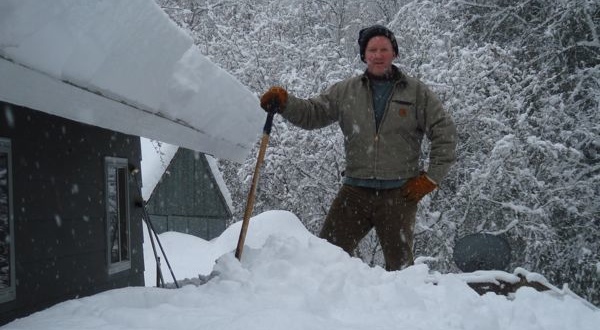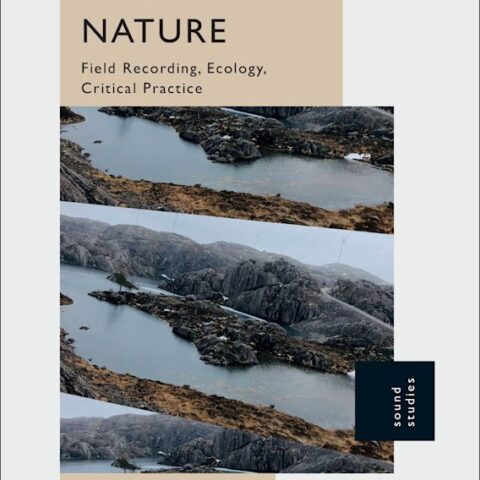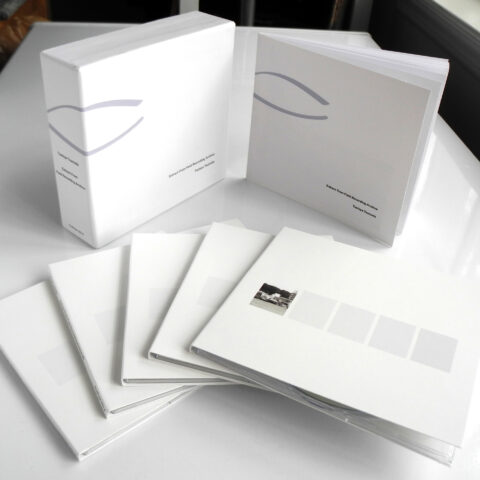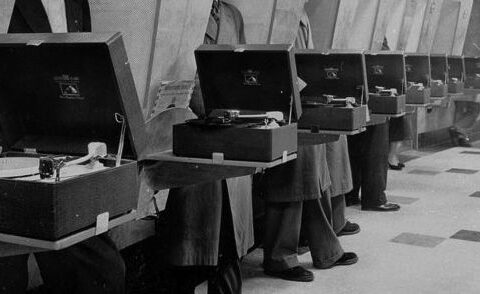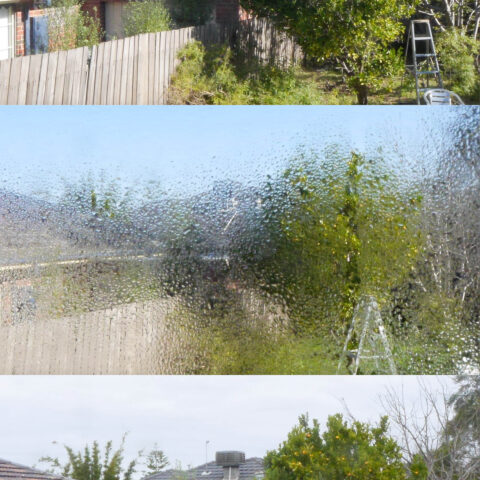Wer’re happy to announce Sonic Terrain’s first exclusive interview, even more so because it’s our friend and hero Frank Bry, a sound designer from Idaho who put soul and heart into a project called The Recordist, where he releases all kinds of sound effects and recordings.
He’s recorded almost everything from concrete drops to insects flying, and today he is releasing a new library called Ultimate Snow, 300 different sounds recorded in all kind of snowy environments. Here is an interview we had with Frank, talking about he different things he had to deal with to get those fantastic recordings in the snow. Enjoy!
Sonic Terrain: We know that this library contains sounds recorded on different sessions over several years. What has been the planning of those sessions and how did you prepare your stuff for this (gear, packaging, clothes, props)?
Frank Bry: I really did not do much planning except for making sure the time of day worked for me. Morning and mid-afternoon were the best for recording to eliminate most background noise. Not sure why, maybe it’s because of the way people move about during their day. A lot less traffic on my street at these times even during the other seasons.
Sometimes I would wrap the gear in towels when recording wet snow to help keep them dry. Using any kind of plastic bag, or something like it, can get hit by snow debris and there goes your take.
My main props were my John Deere tractor, an aluminum shovel, and my body.
ST: What techniques did you use to keep the additional clothing you were wearing from interfering with your recordings?
FB: I did have this issue once or twice. I used the problem to record some foley but after that I actually took the heavy winter stuff off for ten minutes or so. Not fun, but it worked. I also realized that cloth clothing like Carhartt canvas jackets and insulated pants make much less noise. The gloves were the tricky part especially when handling the snow chunks. I tend to use insulated leather work gloves for this. I carry many pairs of gloves with me so if they get wet I can do a quick change. I did not wear any “snow skiing” style plastic clothing and that helped a great deal.
ST: Snow can be pretty subtle, while being full of character based on temperature, water content, and so forth. What strategies or locations were used to keep the background noise low enough to bring out that character?
FB: Quite a few times I was isolated by huge piles of snow and it really helped keep background noise to a minimum. I also tried to get as close to the snow performance as I could depending on the location. At times I could not get the microphone close to the roof snow slide but the recording was good, just another perspective to have on hand for my work.
ST: What were the coldest temperatures you had to deal with?
FB: Around five degrees Fahrenheit. The good thing is that North Idaho has a very dry cold. I did not have to worry about condensation freezing on the gear.
ST: There are impacts, foley, footsteps, slides, and lots of different performances and ways to get sounds from snow. Could you give us some ideas for recording and playing with snow to get different kinds of sounds?
FB: I have a deck that wraps around half my house and on one side the snow falls off the roof and ends up on this deck in large amounts. It’s above a daylight basement so there is ten foot drop of the porch. Over the course of the winter I have to shovel the snow off and it piles up down below the deck. Some of the best snow impacts I recorded were from this snow hitting a dense pile of snow pack.
ST: Has your sound designer position affected your approach on these recordings?
FB: Yes, it sure has. About ten years ago as I was working on the video game Dungeon Siege, I had a moment. I really began to understand that a sound effect is not just a sound, it’s a performance. Character, vibe, personality, emotion, etc. are the most important aspects of a sound to me. How does it make me feel? Does it make the fantasy monster or character feel real? Dungeon Siege has two areas of the game called Glacern and Alpine Caverns. They each had these big hairy snow creatures that you had to slay to get through. The animators had created these great actions that required lots of snow or ice. I had some recordings from the mid-nineties that I had recorded, and they worked good but they were not recorded with performance in mind. I was able to electronically foley them in, but I wish I had snow that had more of a vibe to match the actions. Ever since then, when I go out to record I try to visualize some of those thousands of individual animations I have worked on over the years and do my best to “perform” the sound effect.
ST: Did the environment drop any technical or sonic surprises in your lap, whether that’s temperature, humidity, or actual snow falling as recorded?
FB: North Idaho has a very dry cold, so I did not have to worry about humidity much. I did notice how much bigger snow chunks sound depending on the weather conditions. Wet snow is great except it tends to fall apart easily so it’s good to get it later in the day when it starts to freeze back solid. Dry snow is great also because it has a light but solid tone to it that sounds great when pitched down for an avalanche sound.
ST: Did you find yourself dealing with more background noise than usual in the extreme cold, like highway drones and so forth?
FB: Sometimes I heard lots of background noise and sometimes not. I have no specific reason for this, but I can tell you that right after a large snow storm the trees get completely covered and a stillness and quiet descend on the land. The trees muffle the ambient sound like a treated recording studio. It’s pretty amazing. It can be very quiet and soft, no echoes at all. Then the wind usually kicks up and blows it all off the trees, and we are back to normal. I do not live in a heavily populated area, but across the river, about one mile as the crow flies, there is a state highway that sometimes bleeds in. Best time to record is first thing in the morning when there is much less activity in the area.
ST: And…any of those “happy” accidents?
FB: Yeah, I slipped and fell quite a bit and somehow it always ended up in the take. Just my luck! Falling on your behind hurts, but it sounds fantastic. Makes for good monster footsteps in the snow.
ST: What gear did you use for these recordings? Also, what specific microphones or techniques have you found to be great for specific tasks and why?
I used: Sound Devices 702, Fostex FR-2, Sanken CSS-5, Audio Technica AT-835ST and my trusty little Sony PCM-D1.
I liked the Fostex FR-2 and Audio Technica AT-835ST combination because I could hit the pre-amps hard and the 835-ST has a great airy upper mid-range quality that I like for some of the dry snow slides in the library.
I used the Sound Devices 702 and Sanken CSS-5 set-up for the wet, meaty sounds. To me, this combination has a warm and fat sound that worked out great on the big impacts. In the library there are some huge snow impacts that I used this set up for. I recorded my foot stomping on snow that had accumilated up on top of a wood slash pile. There were air pockets under the snow and I put the Sanken right next to my foot and stomped away. At first I did not know about the air pockets so I fell through and got my leg stuck in the wood pile. I remember I was not wearing headphones and when I got back to the studio I was surprised at how they came out. Sometimes I just wing-it!
I used the PCM-D1 for a lot of the scraping, dragging, and freezing sounds. It’s really bright, and I can hold it or strap it on the snow chunk depending on the sound I’m after. The freezing sounds came out very cool. After the sun has been out a while, the snow indents on the snowbanks melt a little and as it gets cooler later in the day these tiny icicles form and over night they get really frozen. Early in the morning I would go out and gently scrape these icicles with my hand, sometimes bare, and they would make great simulated freezing sounds. I used these a lot in the video game Demigod for the freezing spells and impacts.
ST: You talked on Twitter about the different software applications used for this library. The list includes Peak and Pro Tools. Could you tell us more about the specific things you did using these applications at the mastering stage? Why to use two different audio editing applications?
FB: I use Pro Tools HD as my main editing and mastering tool. I do most of the editing in Pro Tools, but sometimes I use Peak Pro to pre-edit the sounds. Since I work alone most of the time, I can have up to three minutes of nothing in my takes because I’m away from the recorder waiting for a car to go by or by some other annoying thing like a squirrel! It’s just wasted hard drive space so I go through the raw file and take out all the empty space. I also use it to remove the ocassional click from a file. I find that in Peak it’s easier and better for that kind of stuff. I also check my bounces from Pro Tools to make sure all is good. I have found that some plug-ins can put strange stuff in your file at the top and and tail so I double check the files before scanning them into Soundminer. I also own 2 authorizations and I have one on my MacBook Pro so when the big HD rig is shut down I can still do some rough edits without powering up the HD rig and the whole studio. I like to keep it spontaneous and work at odd hours when I should be doing something else. A two-track editor can come in very handy sometimes.
ST: Finally, let’s talk about the most monotonous process of metadata tagging. Are there any tips or tricks that you’ve learned from releasing many collections that can speed up the addition of metadata?
FB: Not really. It’s not a speedy process and my least favorite thing to do. The only thing I can tell you is Soundminer is the absolute best, in my opinion, for this task. I can manually enter the info or use Excel to get all the info in and then import them embbed into the file. Soundminer also has a great feature where you can tag fields with preset info, select the files, double click on the field you want to add info to, and BOOM, all done for all the files. Saves a lot of typing, or copy and paste actions.
I use lots of key words, and I notice that most libraries don’t. You might not have a word in the decription field like “winter,” but if it’s in the keyword field, someone can search for “wintery snow blast” and get snow returns. I would like to know how other people feel about keywords in the files. It can take a lot of work to get them in, but with Soundminer and the preset field entry, it’s pretty painless.

